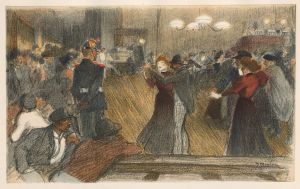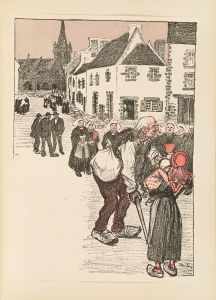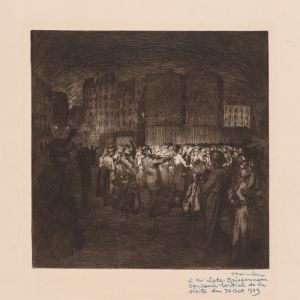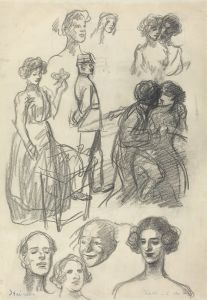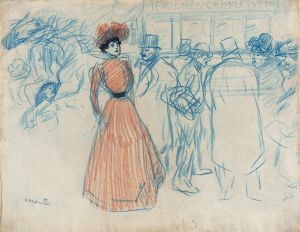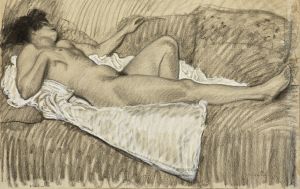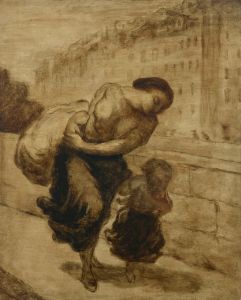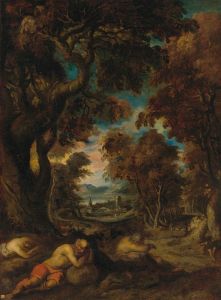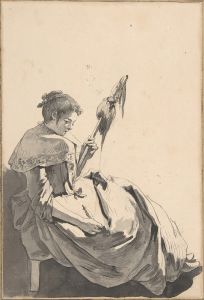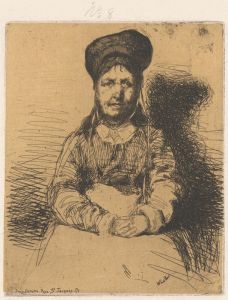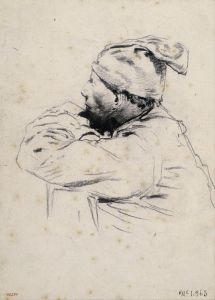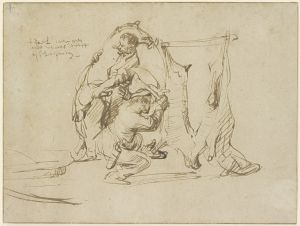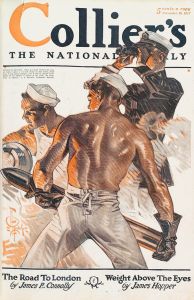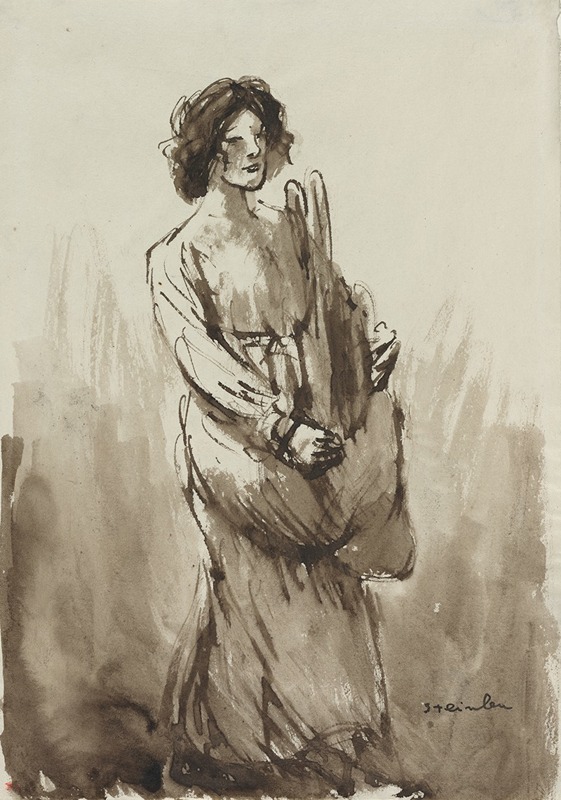
The Bread Carrier
A hand-painted replica of Théophile Alexandre Steinlen’s masterpiece The Bread Carrier, meticulously crafted by professional artists to capture the true essence of the original. Each piece is created with museum-quality canvas and rare mineral pigments, carefully painted by experienced artists with delicate brushstrokes and rich, layered colors to perfectly recreate the texture of the original artwork. Unlike machine-printed reproductions, this hand-painted version brings the painting to life, infused with the artist’s emotions and skill in every stroke. Whether for personal collection or home decoration, it instantly elevates the artistic atmosphere of any space.
Théophile Alexandre Steinlen was a Swiss-born French artist, renowned for his contributions to the Art Nouveau movement, particularly through his illustrations, paintings, and posters. Among his diverse body of work, "The Bread Carrier" stands out as a notable piece, although specific details about this particular artwork are not extensively documented.
Steinlen was born in Lausanne, Switzerland, in 1859 and moved to Paris in the early 1880s. He became an integral part of the Montmartre artistic community, which was a hub for avant-garde artists and intellectuals. Steinlen's work often depicted scenes of everyday life, capturing the essence of the working class and the marginalized communities of Paris. His art was characterized by a strong social consciousness, reflecting the struggles and resilience of ordinary people.
"The Bread Carrier" likely fits within this context, as Steinlen frequently portrayed laborers and street vendors in his work. His art was deeply influenced by his surroundings and the socio-political climate of the time. Steinlen had a keen eye for detail and a profound empathy for his subjects, which is evident in his ability to convey emotion and narrative through his compositions.
Steinlen's artistic style was versatile, ranging from realistic depictions to more stylized and expressive forms. He was adept in various mediums, including painting, drawing, and printmaking. His posters, particularly those for the cabaret Le Chat Noir, are among his most celebrated works and exemplify his skill in combining art with commercial design.
Throughout his career, Steinlen's work was published in numerous magazines and journals, where he often used his art to comment on social issues. His illustrations appeared in publications such as "Le Mirliton" and "Gil Blas," where he collaborated with other prominent artists and writers of the time.
Despite the lack of specific information about "The Bread Carrier," it can be inferred that the piece embodies Steinlen's commitment to portraying the dignity and humanity of the working class. His art serves as a historical record of the lives of ordinary Parisians during the late 19th and early 20th centuries.
Steinlen's legacy is significant, as he influenced subsequent generations of artists and left an indelible mark on the art world. His works are housed in various museums and collections worldwide, continuing to be appreciated for their artistic merit and social commentary.
In summary, while detailed information about "The Bread Carrier" is limited, it is consistent with Théophile Alexandre Steinlen's broader oeuvre, which celebrated the lives of everyday people with compassion and insight. His contributions to art and his ability to capture the spirit of his time remain influential and relevant today.





